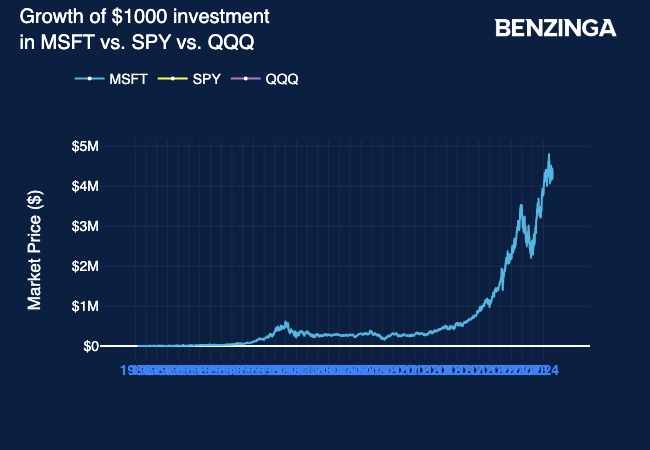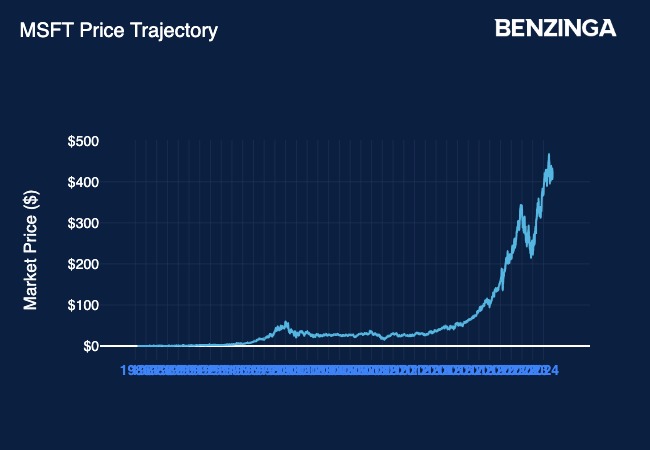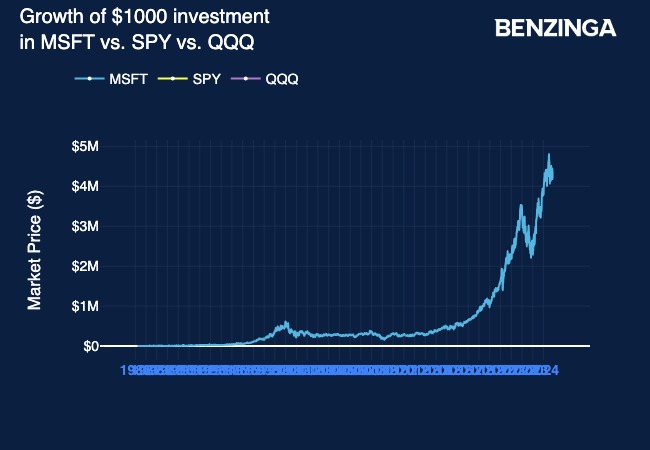Reflections on Microsoft: The Software Revolution Began 41 Years Ago
Microsoft Corp. MSFT co-founder Bill Gates launched Windows on Nov. 10, 1983, igniting a software revolution that transformed personal computing.
A Historic Launch: Gates stepped into the spotlight at the Plaza Hotel in New York City, unveiling Microsoft Windows, which would ultimately reshape the world of technology.
In its early days, the personal computer landscape heavily depended on text-based commands. Gates recognized this limitation and aimed to make computers more accessible through graphical user interfaces (GUIs).
However, Gates faced a significant challenge early on.
Delay Challenges Windows’ Release
During the announcement, Gates boldly claimed that Windows would be ready by April 1984, expecting swift acceptance among IBM-compatible computers. But the complexities of developing such advanced software led to delays, pushing the launch to November 1985—more than a year after the original promise. This prompted critics to label Windows as “vaporware,” questioning its eventual success.
Despite the skepticism, Gates’ vision transformed the tech industry. Windows 1.0, although basic, laid the foundation for a series of advancements that would allow Windows to become the leading operating system globally.
The journey began with simple tools like Calculator and Notepad. As Windows advanced, it introduced key features—most notably, the Start menu in Windows 95 and enhanced security measures in later versions.
See Also: Microsoft’s AI Momentum Could Propel $4 Trillion Market Cap In 6-9 Months Amid ‘Robust’ Q1 Earnings, Says Dan Ives: ‘This Is a Company Firing on All Cylinders’
Imagine recognizing this potential back in 1986 when Microsoft went public on March 13. Let’s look at the financial impact.
The Worth of $1,000 in Microsoft
At its IPO, Microsoft’s share price was $21. A $1,000 investment would have purchased around 47.6 shares. Over the years, Microsoft facilitated multiple stock splits, including:
- 2-for-1 splits: 1987, 1990, 1994, 1996, 1998, 1999, 2003
- 3-for-2 splits: 1991, 1992
These splits significantly increased the number of shares held by early investors.
Current Value of Those Shares
If you invested $1,000 in Microsoft at its IPO, today that investment would be worth over $4.35 million. Meanwhile, a $1,000 investment in the SPDR S&P 500 ETF Trust, which tracks the S&P 500, would be valued around $23,710.


Microsoft’s Significant Journey
The progress from Windows 1.0 to Windows 11 reflects Microsoft’s unwavering commitment to innovation.
Starting as a simple graphical expansion of MS-DOS, Windows gradually introduced important features like the Start menu, plug-and-play hardware, and multi-tasking abilities. Over the years, Microsoft not only created software but fundamentally changed how people work, communicate, and create.
Recently, Microsoft announced revenue of $65.60 billion for the first quarter, a 16% increase compared to the previous year, surpassing the expected $64.51 billion.
As Microsoft continues to innovate in AI, cloud computing, and more, it’s worthwhile to remember the remarkable journey that began with Gates’ bold idea 41 years ago.
The key takeaway? Sometimes, faith in innovation can lead to transformative technology and substantial financial returns.
Price Movement: Microsoft shares closed Friday’s session down 0.68% at $422.54. In after-hours trading, the stock fell slightly to $422.35 at the time of this report, according to Benzinga Pro data.
Read Next:
Disclaimer: This content was partially produced with AI assistance and reviewed for publication by Benzinga editors.
Image via Shutterstock
© 2024 Benzinga.com. Benzinga does not provide investment advice. All rights reserved.

